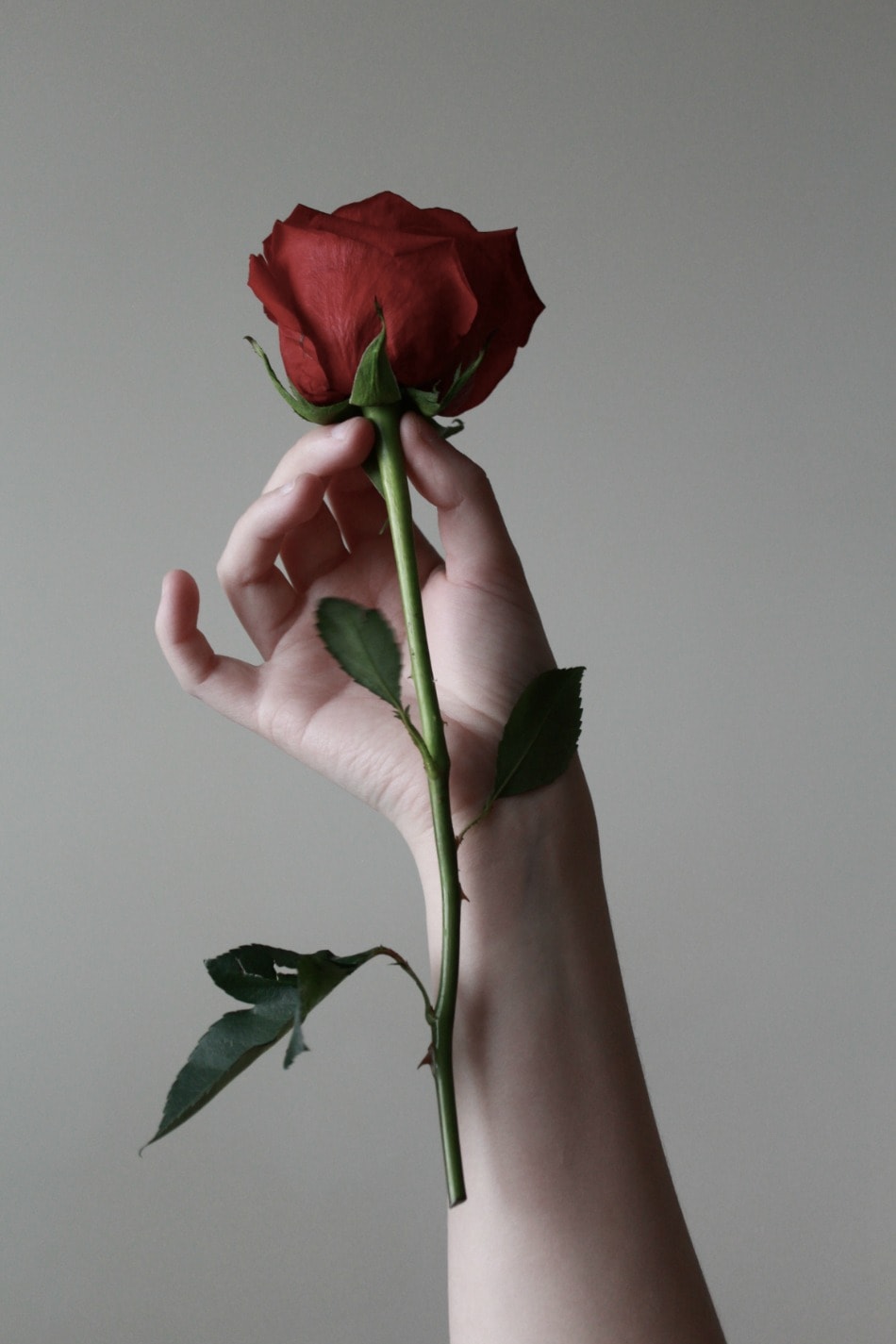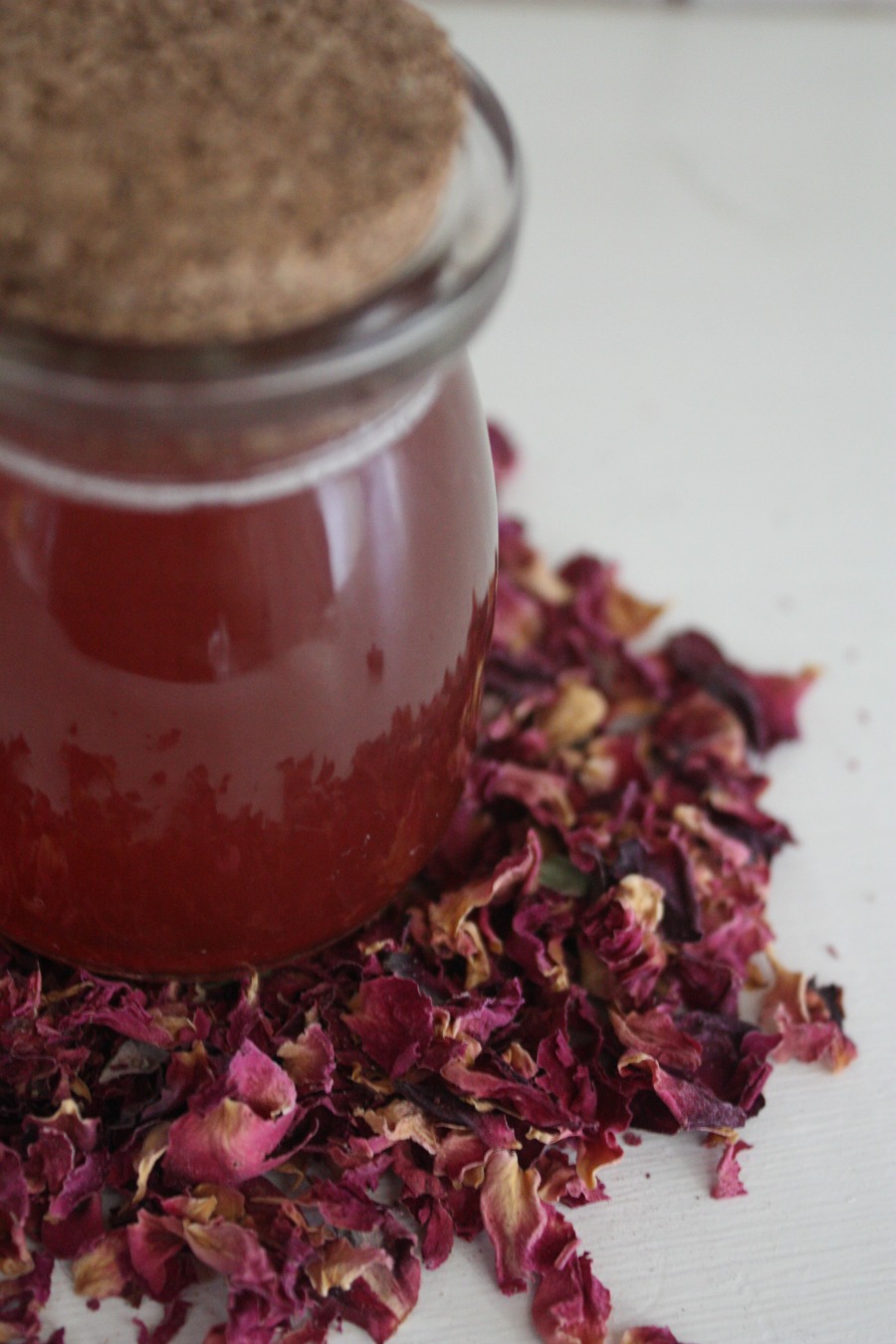
Rose. She is gentle and meek, yet fierce and loyal. She is opening and welcoming, but she knows her boundaries. While she lends herself to helping others through her gifts, she provides quite a bit of protection as well. Rose is an herbal ally anyone would want to have on their side.
The humble rose comes in many varieties, and most all are useful in some way, whether it’s to add beauty to your home, a calming scent to your mind, or wellness benefits to your body. As long as your roses are free from pesticides, chances are they can be used in one of the aforementioned ways.
Today, I’d like to open your eyes to the world of rose. In this post, I’ll share a basic herbal monograph with you that will tell you all about this plant. I’ll share what parts of rose you can use, what it tastes like, it’s energetics and actions, common herbal preparations you can make with it, and some ways you can put it to use in your life. My hope is that you will see how very useful rose can be to you, physically and mentally, and help inspire you to learn more about it as well as use it more in your life.
Rose: An Herbal Ally For All
Rose (Rosa spp.) is a plant in the Rosaceae family. There are around 100 genera and 3,000 species of plants in the Rosacea family worldwide. Plants in this family typically have 5 individual petals and sepals and numerous stamens and styles giving them a fuzzy-looking center. As leaves branch off of the main stem, each leaf branch consists of several oval-shaped leaflets, most of which are serrated around the edges. Most plants in this family also produce various types of fruit.

Rose Plant Parts
Rose has many beneficial properties, and all parts of the rose plant can be used!
If you think about the plant from the outside and move deeper toward the center and down to the roots, the properties we’ll discuss below will get stronger.
The petals and buds have the most gentle action, but that doesn’t mean they are weak. They can be very effective, particularly on an emotional level. The leaves and fruit (rose hips) of rose will be a bit stronger than the petals, and here is where the energetics and actions of rose begin to further strengthen. As you make your way in and down to the inner bark and the roots, these parts of the plant will have the strongest effects on the body.
At verious times in your life, you may find that the gentle actions of rose’s petals are better suited for your needs, and at other times, the stronger action of rose root is more fitting.
Taste of Rose
My favorite property to start with when studying any herb is flavor. Understanding a plant’s flavor and what that indicates about its energetic qualities and possible actions in the body can go a long way in helping you understand how to use a plant without having to memorize all of the plant’s details. You can learn more about how the taste of herbs will make you a better herbalist in this post.
Rose has a sour flavor. This means it likely has an astringent action in the body, working to tighten and tone tissues in comes into contact with. Rose’s sour flavor also indicates it has cooling and drying energetics as well. Sour flavors can also indicate the presence of antioxidants in a plant, which rose most certainly has, particularly where rose hips are concerned.
Rose Energetics
Energetically, rose is cooling and drying. The energetics of a plant work on the physical, mental, and spiritual level. If that sounds weird to you, that’s okay. The more you come to learn about herbs and use them in your own life, the more it will make sense.
Rose’s cooling energetics make it a great ally for hot conditions common with inflammation, such as infections, stress, and tension. Its drying energetics make it great for weepy conditions such as infected wounds, diarrhea, colds, and grief.

Rose Actions
Rose has an anti-inflammatory action that often results in a secondary analgesic action. This can be helpful for inflamed wounds, inflammation resulting from strained muscles and sprained ligaments, the inflammatory response triggered by viral infections, and more.
Rose also has relaxing nervine properties which are helpful when physical inflammation and pain are present, but it’s also helpful for emotional pain and stress as well. Rose helps to cool and calm the nerves and muscles, thus, relaxing the mind and body. This relaxing nervine action is one reason why rose is often called an aphrodisiac herb as well!
Rose is an astringent herb, and this action is best seen in the digestive system. Here rose’s astringent action help to strengthen the mucosal lining of the entire gastrointestinal tract assisting the body when leaky gut, diarrhea, and ulcers are present. This action can also be seen in the nervous system where emotions and grief are concerned. The tightening and toning properties of rose can also help a person to firm up boundaries in their life.
Rose Preparations
Rose can be combined with many different solvents, such as water, alcohol, vinegar, and oil, to make a variety of useful herbal preparations.
Teas and infusions can be sipped on throughout the day or added to baths to cool and dry conditions that are hot and moist. I have found rose tinctures and elixirs are very useful for emotional needs. Rose can be infused into honey and vinegar and used in various food recipes. Rose petals can even be infused into oils and used on the skin.
Rose petals can also be used without any solvents by powdering petals or using them whole and mixing them with salts and sugar to use in food, in the bath, or in various skin care products.
You can learn how to make some basic herbal preparations with rose petals in this post.
In Closing
I hope you’ve learned something new about rose in this post and that you’re excited to incorporate it into your life during those times when hot, moist conditions arise. If you feel you would benefit from cooling off and drying out a bit, rose may be a good choice for you!
